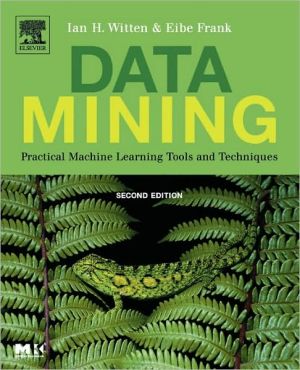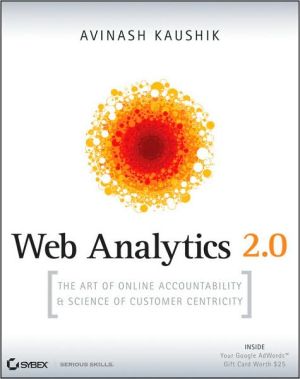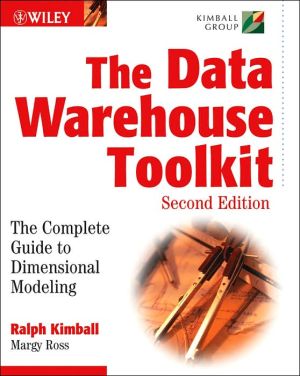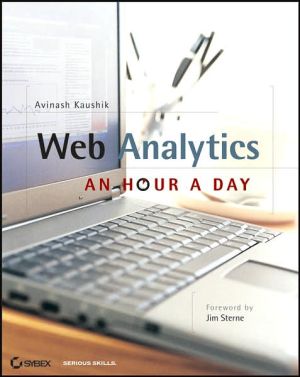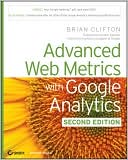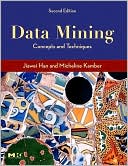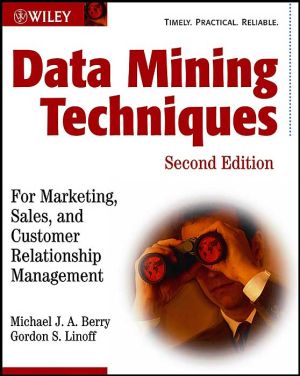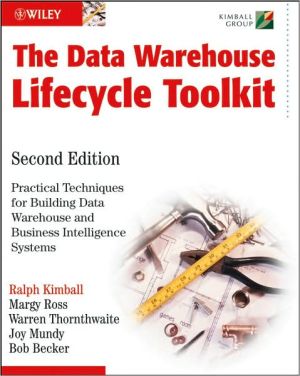Data Mining: Practical Machine Learning Tools and Techniques, Second Edition
As with any burgeoning technology that enjoys commercial attention, the use of data mining is surrounded by a great deal of hype. Exaggerated reports tell of secrets that can be uncovered by setting algorithms loose on oceans of data. But there is no magic in machine learning, no hidden power, no alchemy. Instead there is an identifiable body of practical techniques that can extract useful information from raw data. This book describes these techniques and shows how they work. \ The book is a...
Search in google:
This book presents this new discipline in a very accessible form: both as a text to train the next generation of practitioners and researchers, and to inform lifelong learners like myself. Witten and Frank have a passion for simple and elegant solutions. They approach each topic with this mindset, grounding all concepts in concrete examples, and urging the reader to consider the simple techniques first, and then progress to the more sophisticated ones if the simple ones prove inadequate. If you have data that you want to analyze and understand, this book and the associated Weka toolkit are an excellent way to start.—From the foreword by Jim Gray, Microsoft ResearchAs with any burgeoning technology that enjoys commercial attention, the use of data mining is surrounded by a great deal of hype. Exaggerated reports tell of secrets that can be uncovered by setting algorithms loose on oceans of data. But there is no magic in machine learning, no hidden power, no alchemy. Instead there is an identifiable body of practical techniques that can extract useful information from raw data. This book describes these techniques and shows how they work. The book is a major revision of the first edition that appeared in 1999. While the basic core remains the same, it has been updated to reflect the changes that have taken place over five years, and now has nearly double the references. The highlights for the new edition include thirty new technique sections; an enhanced Weka machine learning workbench, which now features an interactive interface; comprehensive information on neural networks; a new section on Bayesian networks; plus much more.Offering a thorough grounding in machine learning concepts as well as practical advice on applying the tools and techniques, inside you’ll find:+ Algorithmic methods at the heart of successful data mining—including tried and true techniques as well as leading edge methods; + Performance improvement techniques that work by transforming the input or output; + Downloadable Weka, a collection of machine learning algorithms for data mining tasks, including tools for data pre-processing, classification, regression, clustering, association rules, and visualization—in a new, interactive interface.
Pt. IMachine learning tools and techniques11What's it all about?32Input : concepts, instances, and attributes413Output : knowledge representation614Algorithms : the basic methods835Credibility : evaluating what's been learned1436Implementations : real machine learning schemes1877Transformations : engineering the input and output2858Moving on : extensions and applications345Pt. IIThe Weka machine learning workbench3639Introduction to Weka36510The Explorer36911The knowledge flow interface42712The experimenter43713The command-line interface44914Embedded machine learning46115Writing new learning schemes471\\
\ From the Publisher“I was a big fan of the first edition and I'm excited about this new edition.”\ — Peter Norvig, Director of Search Quality, Google, Inc.\ “This book presents this new discipline in a very accessible form: both as a text to train the next generation of practitioners and researchers, and to inform lifelong learners like myself. Witten and Frank have a passion for simple and elegant solutions. They approach each topic with this mindset, grounding all concepts in concrete examples, and urging the reader to consider the simple techniques first, and then progress to the more sophisticated ones if the simple ones prove inadequate. If you have data that you want to analyze and understand, this book and the associated Weka toolkit are an excellent way to start.”\ — From the foreword by Jim Gray, Microsoft Research\ “It covers cutting-edge, data mining technology that forward-looking organizations use to successfully tackle problems that are complex, highly dimensional, chaotic, non-stationary (changing over time), or plagued by. The writing style is well-rounded and engaging without subjectivity, hyperbole, or ambiguity. I consider this book a classic already!”\ — Dr. Tilmann Bruckhaus, StickyMinds.com\ \ \
